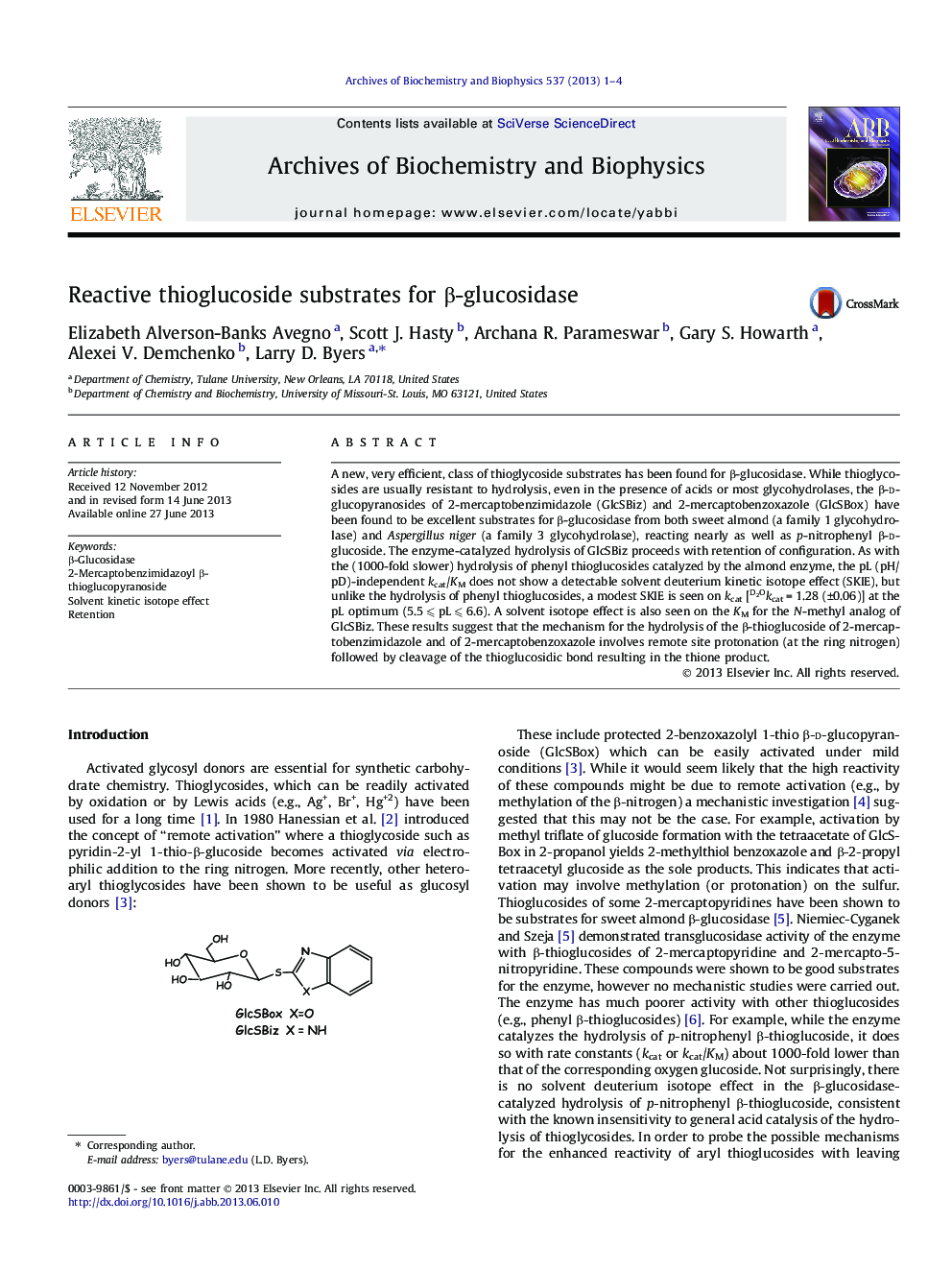| Article ID | Journal | Published Year | Pages | File Type |
|---|---|---|---|---|
| 8290650 | Archives of Biochemistry and Biophysics | 2013 | 4 Pages |
Abstract
A new, very efficient, class of thioglycoside substrates has been found for β-glucosidase. While thioglycosides are usually resistant to hydrolysis, even in the presence of acids or most glycohydrolases, the β-d-glucopyranosides of 2-mercaptobenzimidazole (GlcSBiz) and 2-mercaptobenzoxazole (GlcSBox) have been found to be excellent substrates for β-glucosidase from both sweet almond (a family 1 glycohydrolase) and Aspergillus niger (a family 3 glycohydrolase), reacting nearly as well as p-nitrophenyl β-d-glucoside. The enzyme-catalyzed hydrolysis of GlcSBiz proceeds with retention of configuration. As with the (1000-fold slower) hydrolysis of phenyl thioglucosides catalyzed by the almond enzyme, the pL (pH/pD)-independent kcat/KM does not show a detectable solvent deuterium kinetic isotope effect (SKIE), but unlike the hydrolysis of phenyl thioglucosides, a modest SKIE is seen on kcat [D2Okcat = 1.28 (±0.06)] at the pL optimum (5.5 ⩽ pL ⩽ 6.6). A solvent isotope effect is also seen on the KM for the N-methyl analog of GlcSBiz. These results suggest that the mechanism for the hydrolysis of the β-thioglucoside of 2-mercaptobenzimidazole and of 2-mercaptobenzoxazole involves remote site protonation (at the ring nitrogen) followed by cleavage of the thioglucosidic bond resulting in the thione product.
Related Topics
Life Sciences
Biochemistry, Genetics and Molecular Biology
Biochemistry
Authors
Elizabeth Alverson-Banks Avegno, Scott J. Hasty, Archana R. Parameswar, Gary S. Howarth, Alexei V. Demchenko, Larry D. Byers,
